#wheel of magic
Explore tagged Tumblr posts
Text

If I only could
I’d make a deal with god
And I’d get him to swap our places
••••••••••••••••••••••••••••••••••••••••••••
The Wheel of Dar also referred as The Wheel of Time or Wheel of Night. It like most ranges from January to November with only 8 on there. Then the outer ranges from various sacred animals to various months of animals. The inside is for the meanings of the holidays, which only appears in pure light. All of them are hidden under the colors. The green is there for the difference between the holidays and the blue is there as well for significant differences. The four blue are not just containing at least one major, but they’re the 4 consecutive reasonable holidays placed within the same category of season. The green is for the second category of season. Though, it makes it more complicated.
#Warwitch Wednesdays#WarWitches#wheel of magic#Wheel of Dar#Wheel of Time#Wheel of holidays#Holidays in season#seasonal wheels#seasonal nights#nights holidays#Warwitch vibes#warwitchcore#Warwitch wheels Wednesday#Warwitch Wheel Of Nights
0 notes
Text
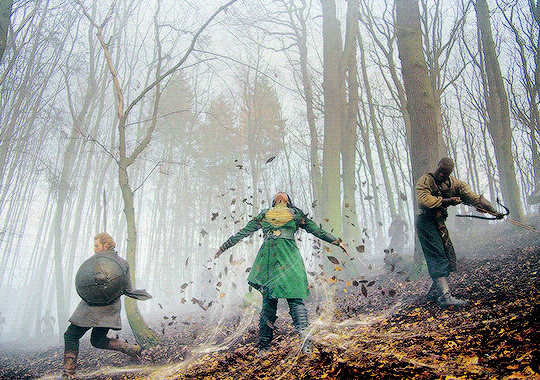



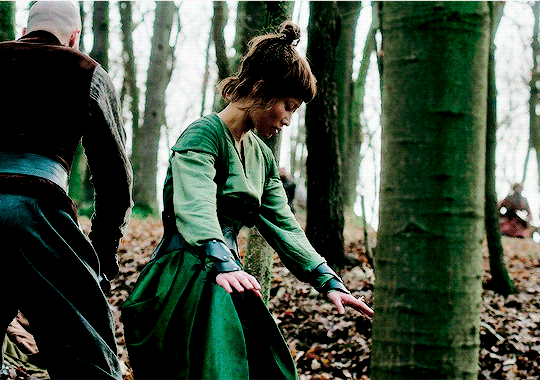

Aes Sedai + Warders in battle
#wotedit#wheel of time#the wheel of time#wot spoilers#wotcentral#fantasyedit#*#there's nothing sexier to me than a well choreographed fight scene. ESPECIALLY if it involves magical soulmates#i love how different their fighting styles are as well#from lan quite literally warding off enemies while moiraine channels to verin keeping her distance and supporting tomas#to ryma's and basan's dance-like fight
3K notes
·
View notes
Text

happy disability pride month time to throw back to wheelchair user kaito again!
its been a hot minute since ive done a proper drawing of his chair so forgive it being janky
anyway aoko always gave me the vibes that she took ballet classes when she was little and this plus that one picture floating around of a couple dancing w the guy in a chair inspired this
606 notes
·
View notes
Text
September 2024 Witch Guide
New Moon: September 2nd
First Quarter: September 11th
Full moon: September 17th
Last Quarter: September 24th
Sabbats: Mabon- September 22nd
September Harvest Moon
Also known as: Autumn Moon, Child Moon, Corn Harvest Moon, Falling Leaves Moon, Haligmonath, Leaves Turning Moon, Mating Moon, Moon of Brown Leaves, Moon When Dear Paw the Earth, Rutting Moon, Singing Moon, Wine Moon, Witumanoth & Yellow Leaf Moon
Element: Earth
Zodiac: Virgo & Libra
Nature spirts: Trooping Faeries
Deities: Brigid, Ceres, Chang-e, Demeter, Freya, Isis, Depths & Vesta
Animals: Jackal & snake
Birds: Ibis & sparrow
Trees: Bay, hawthorn, hazel & larch
Herbs: Copal, fennel, rye, skullcap, valerian, wheat & witch hazel
Flowers: Lily & narcissus
Scents: Bergamot, gardenia, mastic & storax
Stones: Bloodstone,carnelian, cat's eye, chrysolite, citrine, iolite, lapis lazuli, olivine, peridot, sapphire, spinel(blue), tourmaline(blue) & zircon
Colors: Browns, dark blue, Earth tones, green & yellow
Issues, intentions & powers: Confidence, the home, manifestation & protection
Energy: Balance of light & dark, cleaning & straightening of all kinds, dietary matters, employment, health, intellectual pursuits, prosperity, psychism, rest, spirituality, success & work environment
The full Moon that happens nearest to the fall equinox (September 22nd or 23rd) always takes on the name “Harvest Moon.” Unlike other full Moons, this full Moon rises at nearly the same time—around sunset—for several evenings in a row, giving farmers several extra evenings of moonlight & allowing them to finish their harvests before the frosts of fall arrive.
• While September’s full Moon is usually known as the Harvest Moon, if October’s full Moon happens to occur closer to the equinox than September’s, it takes on the name “Harvest Moon” instead. In this case, September’s full Moon would be referred to as the Corn Moon.
This time of year—late summer into early fall—corresponds with the time of harvesting corn in much of the northern United States. For this reason, a number of Native American peoples traditionally used some variation of the name “Corn Moon” to refer to the Moon of either August or September.
Mabon
Known as: Autumn Equinox, Cornucopia, Witch's Thanksgiving & Alban Elved
Season: Autumn
Element: Air
Symbols: Acorns, apples, autumn leaves, balance, berries, corn, cornucopia( Horn of Plenty), dried seeds, equality, gourds, grains, grapes, ivy, pine cones, pomegranates, vines, wheat, white roses & wine
Colors: Blue, brown, dark red, deep gold, gold, indigo, leaf green, maroon, orange, red, russet. Violet & yellow
Oils/Incense: Apple, apple blossom, benzoin, black pepper, hay/straw, myrrh, passion flower, patchouli, pine, red poppy & sage
Animals: Dog & Wolf
Birds: Goose, hawk, swallow & swan
Stones: Agate, amethyst, carnelian, lapis lazuli, sapphire, yellow Agate & yellow topaz
Food: Apples, blackberries, blackberry wine, breads, carrots, cider, corn, cornbread, grapes, heather wine, nuts, onions, pomegranates, potatoes, squash, vegetables, wheat & wine
Herbs/Plants: Benzoin, bramble, corn, ferns, grains, hops, ivy, milkweed, myrrh, sage sassafras, Salomon's seal, thistle, tobacco & wheat
Flowers: Aster, heather, honeysuckle, marigold, mums, passion flower, rose
Trees: Aspen, cedar, cypress, hazel, locust, maple, myrtle oak & pine
Goddesses: Danu, Epona, Inanna, Ishtar, Modron, Morgan, The Morrigan, Muses, Pomona, Persephone, Sin, Sophia & Sura
Gods: Bacchus, Dionysus, Dumuzi, Esus, The Green Man, Hermes, Mannanan, Thor & Thoth
Issues, Intentions & Powers: Accomplishment, agriculture, balance, goals, gratitude & grounding
Spellwork: Balance, harmony, protection, prosperity, security & self-confidence
Activities:
•Scatter offerings in a harvested fields & Offer libations to trees
• Decorate your home and/or altar space for fall
• Bake bread
• Perform a ritual to restore balance and harmony to your life
• Cleanse your home of negative energies
• Pick apples
• Collect fall themed things from nature like acorns, changing leaves, pine cones, ect)
• Have a dinner or feast with your family and/or friends
• Set intentions for the upcoming year
• Purge what is no longer serving you & commit to healthy changes
•Take a walk in the woods
• Enjoy a pumpkin spice latte
• Donate to your local food bank
• Gather dried herbs, plants, seeds & pods
• Learn something new
• Make wine
• Fill a cornucopia
• Brew an apple cinnamon simmer pot
• Create an outdoor Mabon altar
•Adorn burial sites with leaves, acorns, & pinecones to honor those who have passed over & visit their graves
The name Mabon comes from the Welsh/Brythonic God Mabon Ap Modron, who's name means "Divine/great Son", However,there is evidence that the name was adopted in the 1970s for the Autumn Equinox & has nothing to do with this celebration or this time of year.
• Though many cultures see the second harvest (after the first harvest Lughnasadh) & Equinox as a time for giving thanks before the name Mabon was given because this time of year is traditionally when farmers know how well their summer crops did & how well fed their animals have become. This determines whether you & your family would have enough food for the winter.That is why people used to give thanks around this time, thanks for their crops, animals & food
Some believe it celebrates the autumn equinox when Nature is preparing for the winter months. Night & day are of equal legth & the God's energy & strength are nearly gone. The Goddess begins to mourn the loss she knows is coming, but knows he will return when he is reborn at Yule.
Related festivals:
• Sukkot- Is a Torah-commanded holiday celebrated for seven days, beginning on the 15th day of the month of Tishrei. It is one of the Three Pilgrimage Festivals on which Israelites were commanded to make a pilgrimage to the Temple in Jerusalem. Originally a harvest festival celebrating the autumn harvest, Sukkot’s modern observance is characterized by festive meals in a sukkah, a temporary wood-covered hut, celebrating the Exodus from Egypt.
• Mid-Autumn festival- September 17th
Is also known as the Moon Festival or Mooncake Festival. It is a traditional festival celebrated in Chinese culture, similar holidays are celebrated by other cultures in East & Southeast Asia. It is one of the most important holidays in Chinese culture; its popularity is on par with that of Chinese New Year. The history of the Mid-Autumn Festival dates back over 3,000 years. On this day, it is believed that the Moon is at its brightest and fullest size, coinciding with harvest time in the middle of Autumn.
During the festival, lanterns of all size and shapes – which symbolize beacons that light people's path to prosperity & good fortune – are carried & displayed. Mooncakes, a rich pastry typically filled with sweet-bean, egg yolk, meat or lotus-seed paste, are traditionally eaten during this festival. The Mid-Autumn Festival is based on the legend of Chang'e, the Moon goddess in Chinese mythology.
• Thanksgiving- This is a secular holiday which is similar to the cell of Mabon; A day to give thanks for the food & blessings of the previous year. The American Thanksgiving is the last Thursday of November while the Canadian Thanksgiving is celebrated in October
• The Oschophoria- Were a set of ancient Greek festival rites held in Athens during the month Pyanepsion (autumn) in honor of Dionysus. The festival may have had both agricultural and initiatory functions.
-Amidst much singing of special songs, two young men dressed in women's clothes would bear branches with grape-clusters attached from Dionysus to the sanctuary of Athena Skiras & a footrace followed in which select ephebes competed.
Ancient sources connect the festival and its rituals to the Athenian hero-king Theseus & specifically to his return from his Cretan adventure. According to that myth, the Cretan princess Ariadne, whom Theseus had abandoned on the island of Naxos while voyaging home, was rescued by an admiring Dionysus; thus the Oschophoria may have honored Ariadne as well. A section of the ancient calendar frieze incorporated into the Byzantine Panagia Gorgoepikoos church in Athens, corresponding to the month Pyanopsion (alternate spelling), has been identified as an illustration of this festival's procession.
Sources:
Farmersalmanac .com
Llewellyn's Complete Book of Correspondences by Sandra Kines
Wikipedia
A Witch's Book of Correspondences by Viktorija Briggs
Encyclopedia britannica
Llewellyn 2024 magical almanac Practical magic for everyday living
#wheel of the year#harvest moon#September 2024#witch guide#autumn equinox#Mabon#witchblr#wiccablr#paganblr#spirtual#grimoire#book of shadows#witch tips#beginner witch#baby witch#witch community#witchcraft#witchcore#witches of tumblr#tumblr witches#second harvest#moon cycle#witch#witchy stuff#witchy things#witchyvibes#GreenWitchcrafts#moon magic#traditional witchcraft#witches
431 notes
·
View notes
Text

the besties
#my art#the show casting is great but they cant take smolraine from me#lan mandragoran#moiraine damodred#moiraine sedai#moiraine's staff#listen her staff is something so personal to me#rip magic stick you could have been everything#platonic soulmates#lan and moiraine#wot#wot fanart#wheel of time#twot#fanart#digital art#staff
1K notes
·
View notes
Text
Spring Equinox Masterpost- Spoonie Witch Friendly
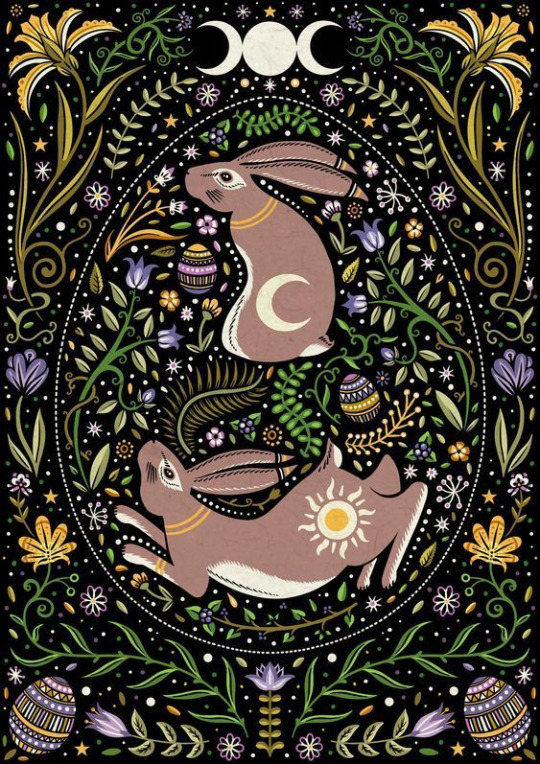
Art Credit: Anastasia Catris
The Spring Equinox, also called the Vernal Equinox or Ostara, is usually celebrated between the 21st of March in the Northern Hemisphere (In the Southern Hemisphere around September 20th or 21st)
In 2024, Ostara and the Spring Equinox land in the Northern Hemisphere on Monday, March 19th.
The Spring Equinox celebrates the arrival of spring. Celebrating balance, growth, and new beginnings as Winter has finally ended.
Spring Equinox Correspondances
Colours
Light Green
Lavender
Sunny Yellow
Light Blue
Pastel Pink
White
Herbal
Lemongrass
Daffodils
Tulips
Violets
Apple Tree
Cherry Blossom
Primrose
Birch tree
Hyacinths
Dandelion
Garlic
Ash tree
Jasmine
Edibles
Honey
Salad greens
Spring veggies
Fresh berries
Mead
Herbs
Eggs
Seeds
Bread
Edible flowers
Quiches
Custards
Maple
Animals
Hares
Baby Chicks
Snakes
Robins
Bees
Butterflies
Phoenix
Ram
Crystals
Fluorite
Moonstone
Silver
Aquamarine
Clear Quartz
Amazonite
Symbols
Bonfires
Flowers
Rabbits
Eggs
Seeds
Baskets
Flowering or Tree Buds
Lambs
Birds
Spiritual meanings
Purification
Cleansing (removal of stagnant energy)
Growth
Transition
Motivation
Balance
Birth
Good fortune
Kindness
Joy
Fertility
Scents
Coconut
Citrus
Floral scents (rose, lilac, jasmine, etc)
Herbal scents (rosemary, basil, mint, etc)
Gods / Goddesses / Spirits
Eostre – (Anglo-Saxon)
Aphrodite - (Greek)
Gaia - (Celtic)
Gaea - (Greek)
Venus - (Roman)
Athena - (Greek)
Aurora - (Roman)
Eos - (Greek)
Isis – (Egyptian)
Freya - (Norse)
Persephone - (greek)
Cybele - (Roman)
The Green Man - (Celtic)
Odin – (Norse)
Osiris – (Egyptian)
Pan – (Greek)
Thoth – (Egyptian)
Adonis – (Greek)
Apollon – (Greek)
Apollo - (Roman)
Need some suggestions to celebrate? I've got you covered.
High energy celebrations and ritual
Deep cleaning of the hearth and home
Nature hikes
Visiting farmers markets
Making preserves
Create a fae garden
Create a seasonal altar
Abundance/Prosperity ritual
New beginnings ritual
Low energy celebrations
Wear pastels
Create flower crowns
Light a candle with scent correspondence
No spoon celebrations
Opening a window
Journaling Prompts
Keeping hydrated
Drink floral tea
Rest
How you celebrate the holiday does not matter. You can choose to do any activity that feels right. These are only suggestions and remember that you're enough no matter what.
Also please note some stuff is UPG. A great book is Year of the Witch by Temperance Alden for honouring the celebrations and if you wanted to work more seasonally. It's not Wiccan-based and has plenty of resources for every witch.
Feel free to post how you celebrate in the comments or reblogs!
Want to see more of my posts? Check out my Wheel of the Year Masterpost or my Main Masterpost.
#witchcraft#witch#electic witch#witchblr#paganism#spoonie witch#spoonie magic#ostara#wheel of the year#witchy#spring equinox#seasonal magic#ostara masterpost#ostara correspondences#spring equinox masterpost#spring equinox correspondances#spoonie#chronic illness magic#chronic illness
1K notes
·
View notes
Text
i'm gonna make my painful contribution to The Discourse and say i do not see the harm in women reclaiming female centric spirituality.
i am not a religious person nor do i want to become one but spirituality is also about culture, community and celebration. i would much rather women celebrate nature, the female form, and "divine femininity" than patriarchal phallocentric religions. that "divine femininity" is used pejoratively has always tickled me considering we live in a world hooked on divine masculinity. the old matricentric religions are really the only form of female culture devoid of male-centric worship we can grasp at, since men have dominated our belief systems for thousands of years. and women learning about the old religions is the best way to unravel the myth of the male creator, and realise it is really women who are the closest thing to a "god" on Earth.
there's also an element here, which i think is deeply capitalist, patriarchal, and a little racist, of people considering the connection to & celebration of nature as somehow primitive. i think that the lifestyles most of us live now, with none of us knowing anything about the land around us is actually very infantile and regressive for humanity as a whole. the ways of life we consider "primitive" (primitive communism, matrilineal societies) are really what we need to find ways to return to post-capitalism. they were in tune to nature, sustainable, and much more communal & equal. how can nature be primitive or ascientific when science *is* in nature, and the practices of these old societies were early scientific discoveries & practices. as a Black person, my community is often trying to reclaim our lost practices. it makes sense to me that women would try to do so too.
#i think most of the people posting against this are not understanding what is meant by spirituality#it's not necessarily beliefs in spirits+magic#imo it's something quite sensory#i don't wanna celebrate things like magic & witchcraft personally but#i am looking to replace the christian holidays with nature centered holdiays (the wheel of the year - samhain etc)#radblr
421 notes
·
View notes
Text
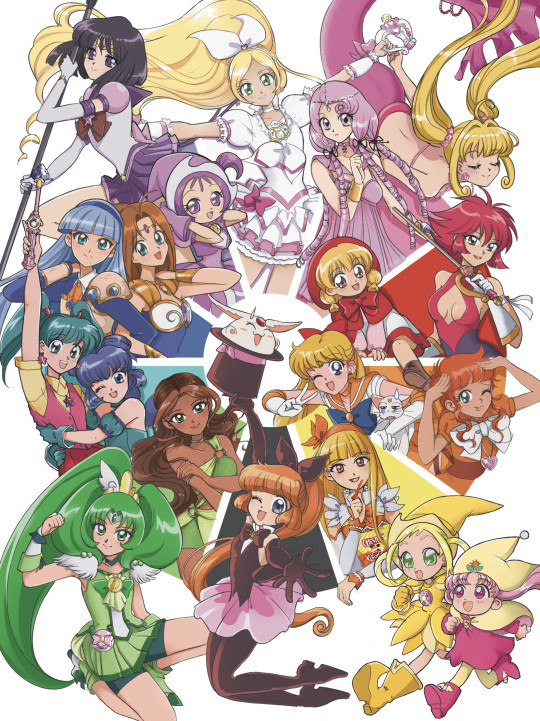
magical girl color wheel challenge
#color wheel challenge#magical girl#90s anime#sailormoon#precure#sailor moon fanart#magic knight rayearth#saint tail#ojamajo doremi
1K notes
·
View notes
Text
Celebrating the Summer Solstice: A Witch's Guide to Litha
🌞🔥🌿
As the wheel of the year turns to the height of summer, we embrace the vibrant energy of Litha, also known as the Summer Solstice. This magical festival marks the longest day and shortest night of the year, a time when the sun stands still and the Earth is bathed in its fullest light. Let's dive into the essence of Litha, explore how witches celebrate this sun-drenched festival, and discover rituals, spells, and traditions to honor this radiant time.
What is Litha?
Litha, celebrated on or around June 21st, is a festival of light, abundance, and the peak of the sun's power. It symbolizes the triumph of light over darkness and is a time of joy, growth, and the bountiful gifts of the Earth.
How Do Witches Celebrate Litha?
Witches celebrate Litha with outdoor rituals, bonfires, feasts, and a deep connection to nature. It’s a time to honor the sun, embrace its energy, and celebrate the fertility of the Earth.
Rituals and Spells for Litha
���� Bonfire Rituals: Lighting bonfires or candles symbolizes the sun’s energy and power. Jump over the fire (safely) or a candle to bring good luck and cleanse yourself of negative energies.
🌿 Flower Crowns and Herb Gatherings: Create flower crowns and gather herbs like St. John’s Wort, lavender, and rosemary, which are potent at this time.
💧 Sun Water: Collect water in a clear jar and leave it in the sun to absorb its energy. Use this sun-charged water in rituals and spells for vitality and empowerment.
✨ Sun Meditation: Meditate outdoors, focusing on the warmth and light of the sun. Visualize its energy filling you with strength and positivity.
Litha and Sacred Symbols
🌞 The Sun: The central symbol of Litha, representing life, energy, and power. Honor the sun with sun-shaped symbols, colors like gold, yellow, and orange, and sunflowers.
🔥 Fire: Symbolizing transformation and purification. Incorporate fire into your rituals through candles, bonfires, or even a simple flame.
🌸 Flowers and Herbs: Representing the Earth’s abundance and fertility. Decorate your altar with fresh flowers and use herbs in your spells and rituals.
Other Litha Traditions
🥗 Feasting: Celebrate with a feast of summer fruits, vegetables, and dishes cooked on an open fire. Share your bounty with loved ones, embracing the spirit of abundance.
🎁 Gift-Giving: Exchange small, sun-themed tokens of appreciation and blessings with friends and family.
🏞️ Nature Walks and Outdoor Activities: Spend time in nature, appreciating the beauty and energy of the season. Collect natural items for your altar or as offerings.
Litha is a time to celebrate the peak of solar energy, embrace the fullness of life, and set intentions for growth and abundance. Whether through rituals, spells, or simply basking in the sun’s glory, Litha offers a moment to connect deeply with the natural world and its rhythms. As we honor the longest day of the year, may the light of the sun fill your heart with joy, your mind with clarity, and your spirit with boundless energy.
Blessed Litha to all!
🌞🔥🌿
#baby witch#book of shadows#grimoire#witch tips#witchblr#beginner witch#closet witch#witch community#witchcraft#witchcraft community#litha#summer solstice#wheel of the year#witchy things#witches of tumblr#witch#eclectic witch#witch resources#witch stuff#litha celebrations#witchcraft rituals#Litha traditions#witchy wisdom#seasonal magic#blessings of Litha#magical journey
333 notes
·
View notes
Text

All About Imbolc
Imbolc, also known as Imbolg, celebrated on February 1st, marks the halfway point between the winter solstice and the spring equinox in early Ireland and Scotland, and also signified the beginning of the first signs of spring after all the harsh winter days. Originally a pagan holdiay in pre-Christian times, there is little in writing about the historic traditions and customs, although many historians believe it revolved around the Celtic Goddess Brigid, lambing season, and cleansing due to observed ancient poetry.
Brigid is a Goddess and daughter of the father-God of Ireland, Dagda. She is associated with quite a few things depending on the sources, but universally associated with wisdom and poetry. Other associations of hers are blacksmithing, protection, domesticated animals, childbirth, fire, and healing. She was also known as a protector of the home and the family.
Once Christianity arose, it is believed that the Goddess was syncretized with the Irish Saint Brigid by Christian monks due to the many overlapping associations. This caused Imbolc to quickly turn into St. Brigids Day and the next day into Candlemas with the rising Christian popularity, enmeshing the holiday associations together.
Today, many people have mixed the traditions and melded many associations from both religious and cultural history to celebrate their own unique way. Common ways to celebrate are making a Brigid's Cross, welcoming Brigid into the home, having a feast in her honor, cleaning the home and oneself, visiting a holy well, and in some parts of the world they still hold festivals and processions carrying a representation of Brigid. Many pagans nowadays are using associations of hers and their connection with nature to create their own ways to celebrate, however, and you can absolutely celebrate however you feel called to do so.
Imbolc Associations:
Colors - white, gold or yellow, green, and blue
Food - milk, butter, cheese, seeds and grains, breads, herbs, blackberries, oat porridge, wild onion and garlic, honey
Animals - sheep and lambs, swans, cows, burrowing and hibernating animals
Items - candles, corn dolls, Brigid's cross, fires, snowdrops and white flowers, crocuses and daffodils, flower crowns
Crystals - amethyst, garnet, ruby, quartz, bloodstone
Other - lactation, birth, feasting, farm preparation, cleansing and cleaning, the sun, poetry and creative endevours, smithing, water
Ways To Celebrate Imbolc:
make a Brigid's cross
light candles
have a feast
bake bread
plan your spring garden
leave an offering for Brigid
make a corn doll
craft a flower crown
clean your home
take a cleansing bath
make something out of metal
have a bonfire
look for the first signs of spring
make your own butter or cheese
do divination work and seek wisdom
write a poem
#magical#magic#magick#witch#witchy#pagan#paganism#witchblr#imbolc#imbolg#brigid#st brigid#candlemas#holiday#baby witch#witch tips#sabbat#wheel of the year#wiccan#celtic#gaelic#history#brigit#beginner witch#witchcraft#witchcore#cottage witch#hedge witch#green witch#eclectic witch
435 notes
·
View notes
Text
Colour Wheel Challenge - My little pony

It took me 4 months to finish 🫠
#my little pony#my little pony friendship is magic#mlp fan art#mlpfim#fanart#unicorn#my art#pegasus#alicorn#discord#discord my little pony#fluttercord#fluttershy#pinkie pie#applejack#spike#princess celestia#princess luna#rainbow dash#rarity#twilight sparkle#princess twilight sparkle#color wheel challenge#colour wheel challenge
328 notes
·
View notes
Text
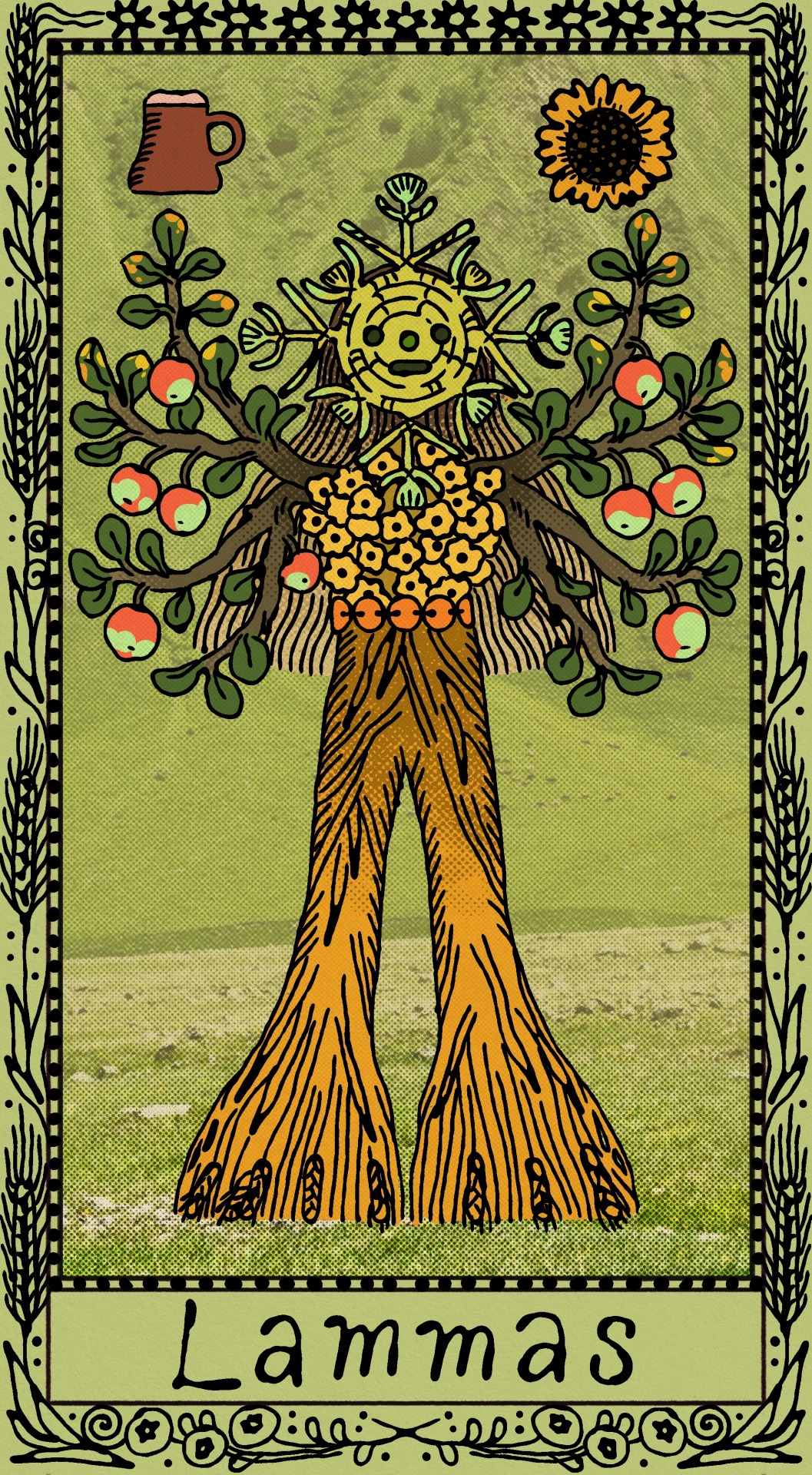
find me here
#lammas#lughnasadh#lughnasa#wheel of the year#harvest season#harvest festival#artists on tumblr#oracle cards#divination cards#witchcraft#witchblr#witch community#art magic#naturecore#goblincore#forestcore#dirtcore
199 notes
·
View notes
Text
Ohhh it’s sad post canon WoT thoughts:
Nynaeve is going to be the last of the EF5 alive.
At best Perrin and Mat have until their seventies, so fifty or so years, Perrin might live that long- Mat however is contending with Seanchen assassination culture, and like, he’s lucky, and alert, but all it takes is one slip up so realistically Mat will likely be the next of them die and likely not of natural causes.
Perrin would likely live and die naturally, the Two Rivers is a safe place to live so unless there’s another drastic world threatening event he gets to live out the rest of his days in peace with Faile.
We don’t know about Rand, if his lifespan was shortened by the loss of his channeling or of that strange new power gives him a similar slowed aging effect. We also don’t know if the others ever learn that Rand is still alive.
And well, we all know what happened to Egwene.
That’s leaves Nynaeve. The oldest of the five. The one who helped raise those kids. She left Emmonds Field to protect them and she outlived them all. She’ll outlive Lan too. She’ll at least have Elayne but that won’t change the fact that those kids she cared so much about are gone. That potentially three of them died violently, that she couldn’t protect them. The long lifespan of an Aes Sedai is a cruel thing, especially for someone like Nynaeve who cares so deeply about the people around her.
#wheel of time#wheel of time spoilers#major wot book spoilers#wot book spoilers#wot post canon thoughts#mat cauthon#rand al'thor#perrin aybara#nynaeve al'meara#egwene al'vere#the emmondsfield five#wot rambles#cries in the existential horror of magically enhanced lifespans
229 notes
·
View notes
Text
Autumnal Equinox Altar

Just wanted to show off my altar for the season! Fall is one of my favorite seasons if you couldn't tell haha!
What's on your Autumnal Altar? What holidays do you like to celebrate? What deities do you like to devote this time too? I wanna know :3
#witchblr#pagan witch#witch#magical theory#witchcraft#spells#magick#culturalexploration#baby witch#witchcore#altars#paganblr#paganism#mabon#autumnal equinox#wheel of the year#fall#pagan#autumn#spooky season#holidays#season#seasonal#spiritual#spirtuality#spiritual journey#spirituality#i love fall please and thank you
85 notes
·
View notes
Text
June 2024 witch guide
Full moon: June 21st
New moon: June 6th
Sabbats: Litha/Summer Solstice- June 20th
June Strawberry Moon
Known as: Aerra Litha, Birth Moon, Blooming Moon, Brachmanoth, Dyad Moon, Egg Laying Moon, Green Corn Moon, Hatching Moon, Hoer Moon, Honey Moon, Lovers Moon, Mead Moon, Moon of Horses, Moon of Making Fat, Partner Moon, Rose Moon & Strong Sun Moon
Element: Earth
Zodiac: Gemini & Cancer
Nature spirits: Sylphs & Zephyrs
Deities: Aine of Knockaine, Bendis, Cerridwen, Green Man, Ishtar, Isis, Neith & Persephone
Animals: Butterfly, frog, monkey & toad
Birds: Peacock & wren
Trees: Maple & Oak
Herbs: Dog grass, meadowsweet, moss, mugwort, parsley, skullcap & vervain
Flowers: Lavender, orchid, tansy & yarrow
Scents: Lavender & lily of the valley
Stones: Agate, Alexandrite, cat's eye, chrysoberyl, emerald, fluorite, garnet, moonstone, ruby & topaz
Colors: Gold, green, orange & yellow
Energy: Abundance, balance, change of residence, communication, decision making, education, family relations, full & restful energy, love, marriage, prosperity, positive transformation, prevention, protection, public relations, relationships, responsibility, strength, tides turning, travel & writing
While strawberries certainly are a reddish-pink color and are roundish in shape, the origin of the name “Strawberry Moon” has nothing to do with the Moon’s hue or appearance.
• June's full Moon is typically the last full moon of spring or the first of summer. The June Full Moon will be extraordinary. For the first time since 1985, Full Moon happens precisely on the summer solstice, when the Sun is highest up. Because the Full Moon is always opposite the Sun, this year, you will see that the Moon is 10 widths lower on the horizon than the Sun ever is.
This “Strawberry Moon” name has been used by Native American Algonquian tribes that live in the northeastern United States as well as the Ojibwe, Dakota, and Lakota peoples to mark the ripening of “June-bearing” strawberries that are ready to be gathered. The Haida term Berries Ripen Moon reflects this as well. As flowers bloom and early fruit ripens, June is a time of great abundance for many.
Litha
Known as: Alban Heruin, Summer Solstice & Whit Sunday
Season: Summer
Element: Fire
Symbols: Besom, fairies, God's eyes, sunflowers & symbols of the sun
Colors: Blue, gold, green, orange, red, tan & yellow
Oils/Incense: Cinnamon, frankincense, heliotrope, lavender, lemon, lily of the valley, mint, musk, myrrh, orange, orange pine, pine, rose, saffron, sandalwood & wisteria
Animals: Cattle, crab, horse & octopus
Birds: Goldfinch, kingfisher, meadowlark, owl, robin & wren
Mythical: Fairies
Stones: Bloodstone, diamond, emerald, jade, lapis lazuli & tiger's eye
Food: Ale, bread, cheese, edible flowers, garden fresh vegetables & fruit, lemons, meade, milk, oranges, pumpernickel bread, summer squash & wine
Herbs/Plants: Anise, basil, betony, cinquefoil, copal, elder, fennel, fern, frankincense, galangal, hemp, ivy, larkspur, lemon, lemon balm, mistletoe, mugwort, mullien, nettle, orange, orpin, plantain, rue, saffron, sandalwood, St.John's wort, thyme, verbena, vervain, wild thyme & ylang-ylang
Flowers: Carnation, chamomile, daisy, heather, heliotrope, honeysuckle, lavender, lily, marigold, orchid, rose, wisteria & yarrow
Trees: Elder, holly, laurel, linden, oak & pine
Goddesses: Amaterasu, Aine, Anahita, Dea, Cerde, Dag, Dana, Eiru, Fenne, Gwydion, Kupala, Mabd, Phoebe, Skhmet & Sul
Gods: Apollo, Baal, Balder, Bel, The Dagda, Donnus, El, The Green Man, Helios, Huon, Jupiter, Llew, Loki, Lugh, Maui, Mithras, Oak/Holly King, Ogmios, Ra, Surya, Thor & Zeus
Issues, Intentions & Powers: Agriculture, changes, divination, ending, fertility, life, light, manifestation, power, purpose, strength, success & unity
Spellwork: Fire & water magick
Activities:
• Charge and cleanse your crystals in the solstice sun
• Make Sun water
• Create crafts with natural elements such as flowers
• Burn a paper with things that no longer serve you or that you are trying to let go
• Invite friends & family over for a bonfire and/or feast
• Gather & dry herbs for the upcoming year
• Clean, decorate & cleanse your altar with summer symbols
• Brew some sun tea
• Take a ritual bath/shower with flowers
• Make your own sun dial
• Craft a door wreath out of flowers & herbs
• Enjoy some sunrise/sunset yoga
• Volunteer at a food kitchen or animal shelter
• Plant trees (especially ones that may provide fruit or berries to feed the wildlife)
• Watch the sunset & say a blessing to nature
• Make flower infused anointing/spell oils
• Eat fresh fruits & berries
• Participate in a handfasting
• Create shadow art
The history of Litha reveals its deep connections to ancient agricultural societies & their reliance on the sun's power. Celebrated as part of the Wheel of the Year, Litha symbolizes the balance between light & darkness. Throughout history customs such as bonfires, herb gathering & the construction of sunwheels have marked this festival. Today, Litha continues to be celebrated by various communities, with gatherings at sacred sites & private rituals in natural settings. It serves as a reminder of our connection with nature and the cycles of life.
• The traditions of Litha appear to be borrowed from many cultures. Most ancient cultures celebrated the summer solstice in some way such as the Celts celebrated Litha with hilltop bonfires & dancing. Many people attempted to jump over or through the bonfires for good luck. Other European traditions included setting large wheels on fire & rolling them down a hill into a body of water.
Litha is often associated with Midsummer, a celebration that extends beyond the pagan and Wiccan traditions. Midsummer festivities are observed in many cultures around the world, including Scandinavian countries where it holds a prominent place in their cultural heritage. Midsummer dances, bonfires, & feasts are integral parts of these celebrations, often accompanied by folklore and traditional rituals that honor the sun's energy and the abundance of nature during this time.
The summer solstice is the longest day of the year & in some traditions, Litha is when The Sun(The God) is symbolically at it's peak time of power & the World will soon be ripe to harvest. It is also when The Goddess is pregnant with The God who is to be reborn at Yule.
• In the Northern Hemisphere the Summer Solstice occurs when the Sun reaches its highest and northernmost points in the sky. It marks the start of summer in the northern half of the globe. (In contrast, the June solstice in the Southern Hemisphere is when the Sun is at its lowest point in the sky, marking the start of winter.)
Some also believe the history & spirit of Litha revolve around two deities, The Oak King & The Holly King. In Wiccan and Neo-Pagan traditions, each King rules the Earth for half of the year. From Yule to Litha, the Oak King rules. On Litha, the two battled for the crown and it is then that the Holly King triumphs. The Holly King will rule through fall until Yule, and the cycle will begin again.
Related festivals:
• Vestalia- June 7th -15th
Was a Roman religious festival in honor of Vesta, the goddess of the hearth & the burning continuation of the sacred fire of Rome. It was held from 7–15 June & was reserved as a women's-only event. Domestic & family life in general were represented by the festival of the goddess of the house & of the spirits of the storechamber — Vesta & the Penates .
On the first day of festivities the penus Vestae (sanctum sanctorum of the temple of Vesta which was usually curtained off) was opened for the only time during the year, at which women offered sacrifices. As long as the curtain remained open, mothers could come, barefoot and disheveled, to leave offerings to the goddess in exchange for a blessing to them and their family.
For the last day, the penus Vestae was solemnly closed, the Flaminica Dialis observed mourning & the temple was subjected to a purification called stercoratio: the filth was swept from the temple and carried next by the route called clivus Capitolinus and then into the Tiber.
Sources:
Farmersalmanac .com
Llewellyn's Complete Book of Correspondences by Sandra Kines
Wikipedia
A Witch's Book of Correspondences by Viktorija Briggs
Encyclopedia britannica
Llewellyn 2024 magical almanac Practical magic for everyday living
#summer solstice#strawberry moon#litha#midsummer#witchblr#wiccablr#paganblr#witch community#witchcraft#witches of tumblr#witch guide#wheel of the year#sabbats#traditional witchcraft#witch tumblr#witch tips#beginner witch#baby witch#GreenWitchcrafts#moon magic#witchcore#grimoire#book of shadows#Spellwork#spellbook#witch#witchyvibes#june 2024#witchlife#witch friends
723 notes
·
View notes
Text
Wheel of Doom Round 4

#autism#polls#tournament#autismsummit2024#wheel of doom#miles tails prower#sonic the hedgehog#twilight sparkle#my little pony friendship is magic
98 notes
·
View notes